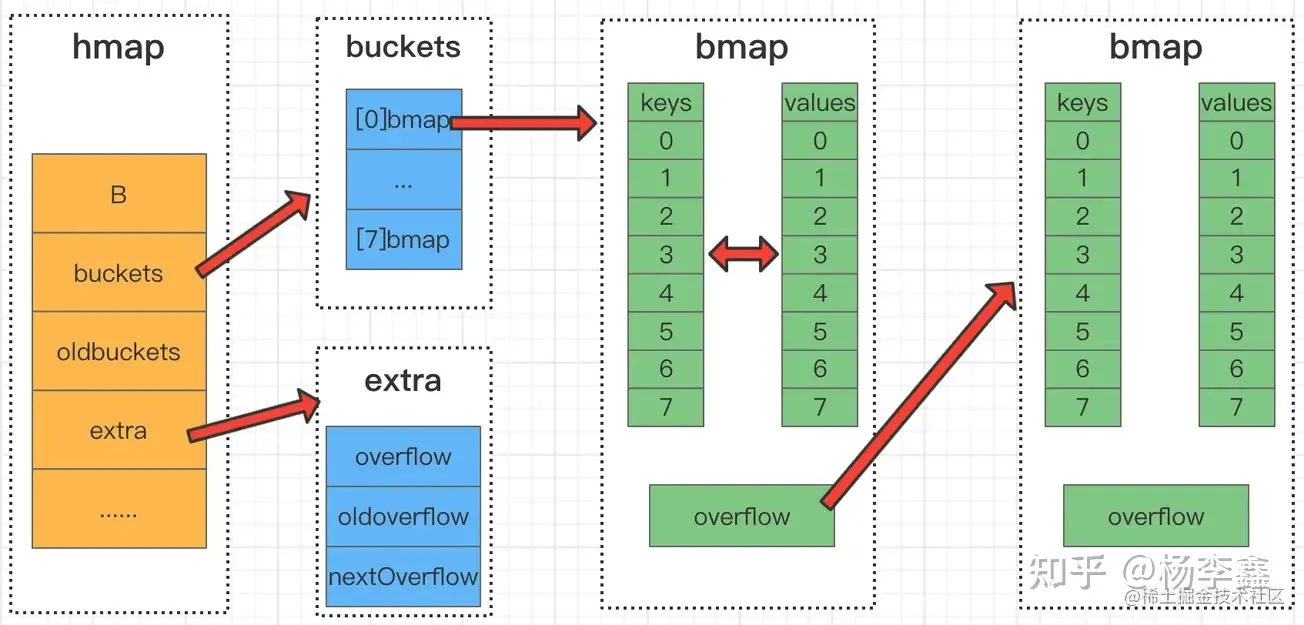Go 数据结构
数组
一种具有固定长度的基本数据结构,一旦创建了它的长度就不允许改变,数组的空余位置用缺省值填补,不允许数组越界。值拷贝传递
Slice
基于数组的实现,是长度动态不固定的数据结构,本质上是一个对数组字序列的引用,提供了对数组的轻量级访问。
len: 读写不能超过, capacity: 最大扩张容量
由于slice进行追加的元素超出了原来数组的大小,因此go内部会帮我们创建一个新的底层数组,而slice的引用地址不再是arr了,变成了新创建的数组。
Map
// 创建
// map[KeyType]ValueType
var m map[int]int
m := make(map[int]int)
m := map[int]int{
1: 1,
2: 2,
}
// 读取
i := m[1]
v, ok := m[1]
// 遍历
for key, value := range m {
println("Key: ", key, "Value: ", value)
}
// 删除
delete(m, 1)
 相同容量扩容: 元素会发生重排,但不会换桶。
相同容量扩容: 元素会发生重排,但不会换桶。
2倍容量扩容: 发生这种扩容时,元素会重排,可能会发生桶迁移。
线程不安全:
type Resource struct {
sync.RWMutex
m map[string]int
}
func main() {
r := Resource{m: make(map[string]int)}
go func() { //开一个goroutine写map
for j := 0; j < 100; j++ {
r.Lock()
r.m[fmt.Sprintf("resource_%d", j)] = j
r.Unlock()
}
}()
go func() { //开一个goroutine读map
for j := 0; j < 100; j++ {
r.RLock()
fmt.Println(r.m[fmt.Sprintf("resource_%d", j)])
r.RUnlock()
}
}()
}
map数据进行操作时不可取地址, 因为随着map元素的增长,map底层重新分配空间会导致之前的地址无效。
sync.Map (适合读多写少)
type Map struct {
mu Mutex
read atomic.Value // readOnly
dirty map[interface{}]*entry
misses int
}